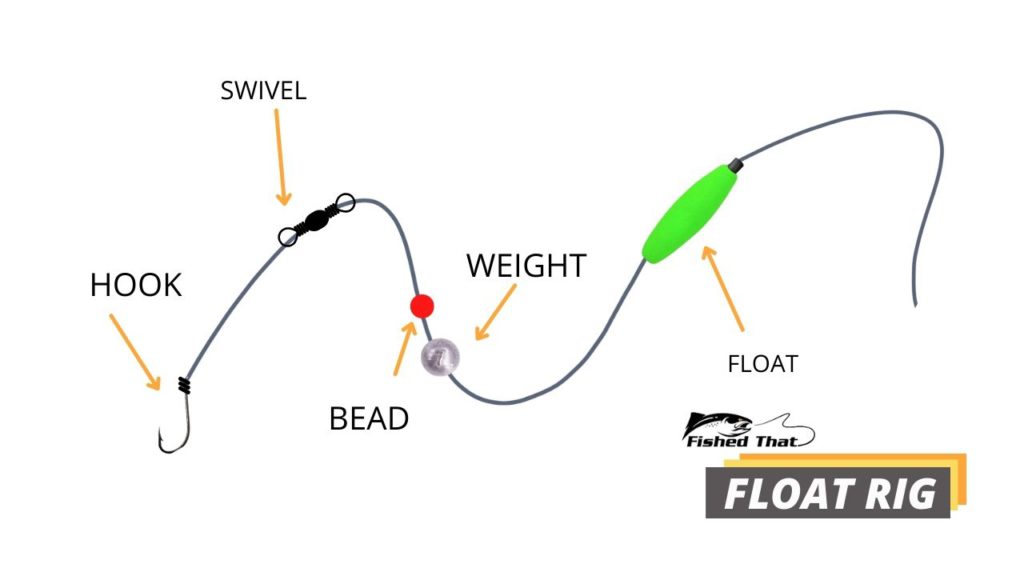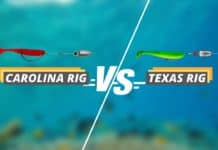Pike are highly territorial and will quickly become vicious when under attack. But beginners can still catch them! In fact, they are one of the easiest freshwater predators to land. If you’re a pike fishing beginner, knowing where and how to catch this powerful fish and what is the right gear to use is the first step to becoming an expert. We’ve also included some basic tips for better chances of reeling this big fish!
What Is Pike Fishing?
Pike fishing is the process of catching pike for recreational or commercial purposes. Pike anglers explore rivers, lakes, and bays for these incredible freshwater predators. Usually, you can fish for pike all year long, but the best time is during fall, winter, and early spring.
Tip: For better pike numbers and to increase your luck, you should fish during the pre-spawn period or after spawning (April), as hungry pike will more viciously. You should also hunt this game fish during the daytime, preferably in the morning, as pike are daylight hunters.
Where Do You Fish For Pike?
Since pike are highly territorial and solitary species, you can fish for them typically around bays, drop-offs, inlets, or areas with submerged logs and undercut banks. They also like to hang out in shallow waters with thick vegetation like weeds and reed stems.
However, you’ll need a basic pike fishing tackle in spring, fall, and winter because pike will move 8 to 14 feet deeper. In summer, pike will go to deep lake waters, reaching 30 feet because they’re temperature sensitive. In addition, pike can’t handle low oxygen levels due to the summer heat hence the move to cooler lakes and rivers.
Tip: Luring the pike out at this depth is easier, but you must be prepared for a fight because they’re pretty strong.
Pike Fishing Set Up
Pike fishing for beginners is more exciting if you use the correct tackle. Your setup will consist of a fishing rod, line, hooks, lures, and the best bait for pike. Below is a detailed description of everything you’ll need for a robust pike fishing setup.
Leader

Normally, pike will bite through your fishing line, so you need a wire leader to handle their razor-sharp teeth.
Titanium and stainless leaders (15-30 pound test) will present great results for smaller lures. However, you’ll need a fluorocarbon wire trace (50-80 pound test) for bigger lures. Fluorocarbon has more abrasion resistance, and it’s less visible underwater.
Fishing Line
A braided fishing line (15-pound test) is better for bottom fishing, whereas a monofilament line (8-pound) is better for trolling. Experienced anglers prefer the braided fishing line because it casts farther and is durable. However, the monofilament line holds knots better and will cast smaller baits through the undercut banks and logs.
Rod

The best northern pike fishing rod has medium to medium-heavy power and fast action. This rod type will give you more control because, as mentioned earlier, these suckers are aggressive, especially the big ones! In addition, choose a rod length ranging from 6-10ft for better casting and hook setting.
Hooks
Treble hooks are the best for pike fishing because they can withstand a pike’s attack from any angle. Unlike other types of hooks, it has three separate hooks for better clawing power and a firm grip even when a big pike is pulling.
The size of your treble hook should match the lure or bait type. The best treble hooks range from size 2 to 6. What’s more, wide gap hooks with a shorter shank work better for lures, but you’ll need a longer shank for dead baits.
We suggest reading our treble hook size chart guide to better understand what treble hook size is best.
Reel

The baitcaster reel is superior for northern pike fishing because it presents better casting control and is easier to spool once you adjust the reel. However, pike fishing beginners will appreciate the spinning reel thanks to its ease of use and versatility.
Lure
The best lure for northern pike includes lipless crankbaits, spoons, spinnerbaits, inline spinners, soft plastic lures, jerk baits, and top-water lures.
The size of your lures will determine the size of the pike you catch. So, for bigger pike, you must use bigger lures—usually, a great lure size range between 12 and 16cm. You should also choose highly visible colors like chartreuse because pikes are more attracted to them, more so if it resembles their natural prey.
Using a lure that creates vibration or sound in shallow water is also highly recommended.
Bait
Experienced anglers use either live or dead bait for pike fishing. But the best bait for pike fishing beginners is dead bait, as it stays in place longer, especially during ice fishing. It also has a more pungent scent that will attract pike. However, you should use fresh and shiny dead baits for better results. Popular dead baits include trout, roach, and sardine.
Other Must-Have Pike Fishing Gear
The pike fishing setup above includes the main requirements for a beginner. However, there are additional must-haves that will make your work easier and complete the entire pike fishing tackle. They include:
Jaw Spreader
Pike has razor-sharp teeth, which makes hook removal challenging, especially for a beginner. The jaw spreader comes in handy by holding the pike’s jaws wide apart while you remove the treble hooks.
Pliers
While the jaw spreader holds the jaws apart, you’ll use the pike pliers to unhook all the hooks safely. The best pliers for fishing should have a line cutter and a longer nose to avoid contact with the pike’s sharp teeth.
Net

Your pike fishing tackle is incomplete without a net, especially if it’s your first time fishing for a pike. A landing net helps you safely carry the fish out of the water. The nets come in different sizes and types, but the best net for pike fishing has rubber mesh to prevent pike from biting through.
Unhooking Mat

These mats provide a protective layer for the fish on land while you unhook its jaws. They’re spongy with soft foam or safe polyester material, and they’re available in a range of sizes and designs.
Bank Sticks

A bank stick will hold your rods while waiting for a pike to take a bite! They’re ideal for shoreline or bank fishing. Some models can accommodate a bite alarm, butt griper, and buzzbar to enhance your fishing experience.
What Rigs Are Best for Pike?
The best rigs to use for pike fishing includes a ledger rig, float rig, and a deadbait rig. Here’s a closer look at each rig and why they’re so effective:
Ledger Rig
The ledger rig is the most popular rig in pike fishing, especially in deep and fast-slowing waters. This rig presents two bait options, increasing the tackle’s resistance when the pike struggle to unhook. Lastly, you can detach and replace parts of this rig without disassembling the entire rig.
Float Rig

Float rigs are great for pike fishing because they provide a wider depth range. You can cast it to the bottom of the waterbed or let it float above the surface without missing your target.
What’s more, your lure or dead bait moves gently within your vicinity without being washed away. These movements produce vibrations that attract the pike.
Deadbait Rig
Deadbait rigs will work for a beginner because they’re static, and if deployed accurately, they’ll produce positive results. It also covers a wider surface area, saving you time. The setup includes a run ring, swivel, buffer bead, wire trace, and an unweighted pencil float. You’ll launch the rig to the bottom of the water and use the pencil float to determine if the pike is hooked.
How to Catch Pike
Luring and hooking a pike is easy, but you must be prepared for an intense struggle because they don’t go down without a fight. However, as a beginner, knowing what to do helps. Below are a few tips to help you catch a pike.
- Locate a potential spot for pikes. Remember, this fish likes to hang around shallow waters with plenty of vegetation, like weeds. Bays, rivers, and lakes also provide excellent homes for pike.
- Choose a sturdy medium-heavy power rod with fast action and pair it with a baitcaster or spinning reel.
- Combine a strong braided line with a fluorocarbon wire leader to increase your chances of hook settings. Remember, a pike has sharp teeth that will bite through your wire leader. Also, a 50-80 pound test is ideal, especially if you want to land a bigger pike.
- Hook your gear with treble hooks and add brightly-colored lures or dead baits to attract the pike from a distance.
- Finally, cast your tackle and wait for the pike to move toward your bait. If there are no signs of hooking, gently troll your lures in a swimming pattern to trigger the predator.
- Once it’s hooked, lift it out of the water, use a net, and lay it across the unhooking mat for hook removal. Don’t use your hands. Instead, utilize your jaw spreader and pliers for safe hook removal.
- That’s it! If you don’t intend to take it with you, return the pike into the water immediately.
Is Pike Fishing Worth It for Beginners?
The answer is yes! Pike fishing for beginners is enjoyable despite the pulling power of the fish. As a matter of fact, you’ll enjoy chasing this powerful freshwater predator, especially if you have the proper pike fishing gear.
Table of Contents



